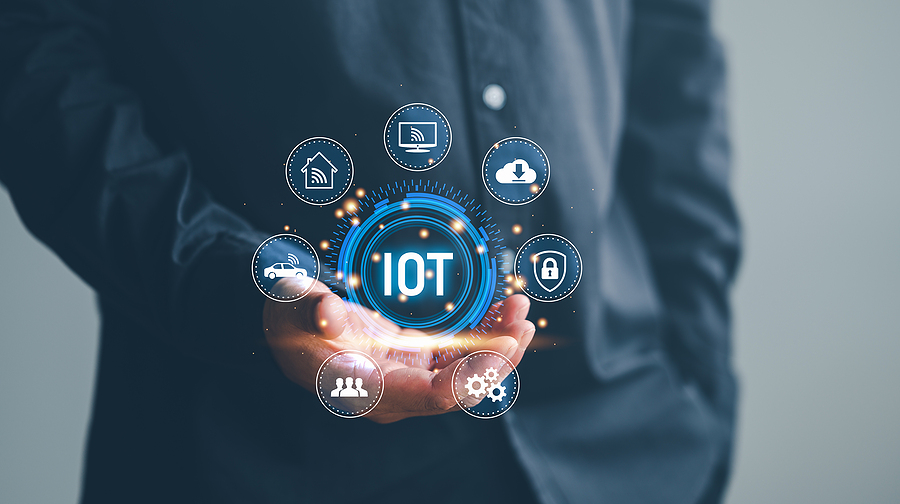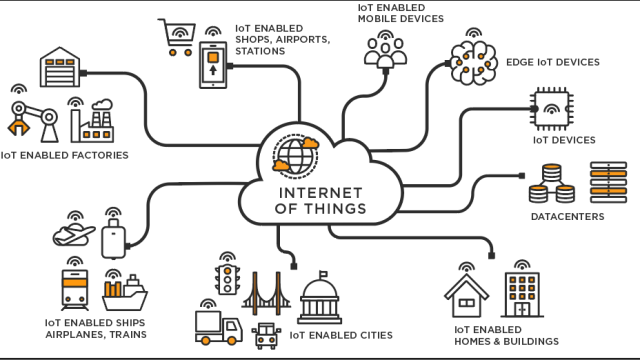
IoT Explained
According to a report issued by Transparency Market Research, the Internet of Things (IoT) is set for tremendous growth over the next few years. In fact, it is predicted that the market will expand at an impressive CAGR of 24.3% up until 2026. This network comprises physical items that are equipped with sensors, software, and other technology for connecting and exchanging data through the internet. IoT is rapidly making the world smarter by merging physical and digital worlds.
In the last few years, the Internet of Things has become a major driver of technological progress in the 21st century. Enabling users to connect everyday items such as cars, thermostats, and baby monitors to the web through embedded devices. This allows for continuous communication between people, processes, and objects.

Internet of Things (IoT) Significance
These ‘smart’ devices range from everyday appliances to advanced industrial instruments. Recent data shows that there are around 7 billion IoT devices present at this moment. With the growth of consumer and industrial IoT markets, traditional storage hardware will be dismissed in favor of networked systems. The shift will result in a surplus of old hardware that can be repurposed.
With higher expectations for asset upgrades, a change in priority towards data security has been seen with new protocols for large scale hardware redeployment. However, growth in IoT presents additional challenges to existing ITAD strategies.
Technologies that Make IoT Possible
The practicality of IoT has been made possible through a variety of technological advancements. Although the concept has existed for quite some time, it is only just beginning to come into fruition. New emergence of low-cost, low-power sensor technology has expanded the possibilities for manufacturers seeking to implement IoT solutions. These affordable and reliable sensors enable connections between systems through a multitude of network protocols, providing seamless data transfer to the cloud and other devices.
Recent years have seen a rise in the use of cloud computing platforms. This has been incredibly beneficial for businesses and individuals alike, as it allows them to utilize infrastructure on demand without having to maintain it on their own. As technology advances and data grows in abundance, businesses have acquired new abilities to process and understand this data at a rapid pace. Machine learning and analytics has enabled the internet of things (IoT) to go beyond its limits, while also providing valuable input for these technologies.
Advances in artificial intelligence have made natural-language processing (NLP) a reality for IoT devices, such as Alexa, Cortana, and Siri. These digital personal assistants are now increasingly accessible and cost-effective to be used in homes.
ITAD Solutions in Response to IoT
It is important to create an efficient IT asset disposition plan that considers all aspects regarding the decommissioning of hardware, not just those related to IoT. This should be done when the devices are still in use, making sure to document every step. From removal and packaging until it is sent off to the reverse supply chain partner or repositioned internally within the organization. The need for data security is becoming increasingly urgent as well. Governments around the world are devising protocols which must be meticulously followed when it comes to equipment that is either being repurposed or disposed of. Every step of the process must adhere to a specific set of guidelines.
As the population and technology advances, the need for regulated disposal of retired assets is paramount. Companies offering ITAD services are essential in disposing of electronic waste properly. These retired devices would otherwise end up polluting landfills or damaging the environment with harmful chemicals. ITAD facilities offer sustainable solutions to ensure that hazardous materials aren’t released into the atmosphere, while contributing to the circular economy via the production of new items.
